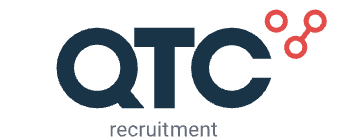Written by Raisa - 6 Minutes reading time
Employee wellness: absenteeism, presenteeism and productivity

The pandemic has brought a heightened sense of awareness and understanding that employee well-being has direct repercussions on organisations. These repercussions include things like impact on employee healthcare premiums, absenteeism, presenteeism, productivity and retention. Given the impact of all these factors, employers need to take a closer look at the need for and what it takes to run a successful employee wellness program.
“In personal matters, there’s no such thing as balance when it comes to work-life,” said Tanner Bergman, MS, LPC, NCC, MS, LPC, NCC, in the Paycom webinar Wellness in the Workplace: A Chat with Steve Boese. “We must shift into acknowledging and understanding that it’s a work-life connection, not a balance, and the importance human capacity plays in this connection.”
Employee wellness impacts business outcomes
Because as we continue to emerge from the height of the pandemic, the overall state of emotional health in the U.S. isn’t great. A Lyra Health report on workforce mental health for 2022 found that 84% of workers surveyed experienced at least one mental health challenge over the past year. These can be things such as stress, burnout, depression, anxiety, bipolar disorder, PTSD, etc. And 59% reported this in 2021 which is up 48% from 2020.
“Regardless of industry or seniority level, employees’ mental health problems are affecting them at work,” said Steve Boese, Co-founder of H3 HR Advisors, Co-chair of Human Resource Executive Magazine’s HR Technology Conference and Co-host of At Work in America podcast. “That’s why mental health and emotional support are critical in the overall wellness of employees and their organisation.”
The pressure to address job burnout became so intense in 2019 that the World Health Organisation declared burnout an “occupational phenomenon” in the 11th Revision of the International Classification of Diseases (ICD-11). And this was before the pandemic!
Absenteeism or presenteeism?
Employees who are experiencing burnout are 63% more likely to take a sick day, 23% more likely to visit the emergency room, and 2.6 times more likely to be actively seeking a different job, according to a Gallop report. And managers are largely responsible for such conditions, making well-being a priority in an organisation’s culture as necessary prevention.
Because when employees are ill physically or mentally, they aren’t giving their job their full attention. In other words, they aren’t fully present – presenteeism. And not being present mentally is almost more detrimental than not being physically at their jobs. Hopefully, if employees are physically ill, they’re resting at home and recharging to return to work healthier. But not being present mentally means you’re getting work out of them, but they’re unable to perform and focus on their tasks. The bottom line is, that they aren’t producing their best work which leads to lower productivity.
Presenteeism is just as prevalent now in the workplace – remote or office – as ever. It’s probably more prevalent because it’s easier to work when you’re sick if you’re doing it remotely. People aren’t hearing you cough nonstop, and they aren’t seeing you. Heck, you can work from your bed, looking like something the cat dragged in. And with the Great Resignation, many companies are doing more with fewer people, placing more stress on those who stay.
Less burnout, more present
So despite the pandemic winding down, employee wellness and burnout issues are still a critical concern for employers.
One group of employees who have been negatively impacted over the last two years is those who are also caregivers. “A whopping 89% of caregivers surveyed said they experienced one mental health challenge in 2021 compared to 81% of non-caregivers,” said Boese. “Those both are bad numbers. But those with children or elder care responsibilities were also more likely to experience worsening mental health over the past year.
And more working caregivers are seeking mental health care to treat their anxiety, depression, and other mental health problems. As many as 41% of these caregivers sought care in 2021 compared to 29% of employees without caregiving responsibilities. Not all employees are caregivers, but many are. And it’s going to be very important for employers to be very intentional in their understanding and supporting of this large group in their workforce.”
On top of the personal and work stressors, we add global stressors with 24-hour news and social media, and all that spills over into employees’ work lives.
For two years most of the workforce has been working from home and their values were right in front of them all day. The world has changed and people have changed, and are still actively changing. So, employers need to acknowledge this and cultivate work environments that allow employees the opportunities to find and connect values, meaning, and purpose in and outside their work.
“We also have to acknowledge that we are now bringing back a workforce that has experienced significant trauma for an extended period of time – and many of these traumas and stressors are continuing – so this demands and deserves intentional empathic human level responses from organisations that employ them,” said Bergman, Supervisor of Well-being Advisement Programs at Paycom, and a licensed professional counselor in Oklahoma, who’s board certified nationally.
Not only have employees dealt with and are still dealing with the global pandemic, but add on top of that the conflict in Ukraine, U.S. court challenges with social and cultural issues, and this is very likely the most stressful and challenging times since the end of WWII, expressed Boese. “It’s hard to overestimate the impact these global challenges have had on our collective well-being.”
Wellness is only as good as the culture
Workplace culture, including norms, structures, and expectations, either drives or diminishes employee wellness. In the office, deadline-intense cultures that haven’t adapted to the value shift that’s occurred will continue to be negatively affected until the shift’s been effectively addressed.
“The focus has to shift over to a human level,” said Bergman. “We can’t rely on offering a robust benefits package while continuing to have unrealistic work metrics or expectations. We must look at our processes and the impact they have on the humans who are performing them. The reality is that we spend most of our time at work and encounter our mental and emotional health more frequently at work, and it’s the place where we talk about it the least. That’s a problem we must address.”
An emotionally healthy workforce is beneficial to employers. It results in better outcomes, such as higher employee engagement, lower turnover, a more positive company culture, and higher productivity.
It is important for you as a manager to make employee well-being a priority to avoid poor mental health and undesirable business outcomes. Do you need a specialist in the field of Life Sciences for your organisation? Allow our experts to search for you and find the perfect professional for your company. Check out our offerings and how we can assist you here.
Also published on: HRmorning.com
Want to stay informed about current Life Science and recruitment news on a regular base? Then register here for free.
